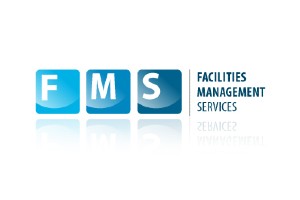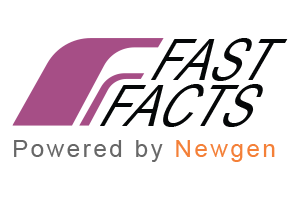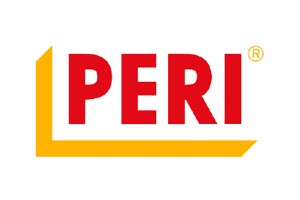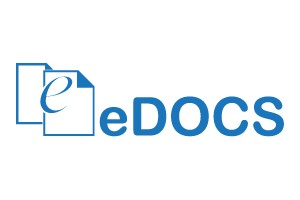- SYSCO ICT Technologies Pvt. Limited
- info@syscoict.com
- +91 88796 15377
High performance
provides its customers with solutions and technologies for dealing with the most complex problems in High Performance .
Global Service
global provider of world-class IT support and up your existing IT resources to focus on core business needs.
Support
To provide the best customer support to our valued customers, we offer 24/7 support! You are always welcome to call our offices .

About Sysco ICT
Expert IT solutions for
Your business
SYSCOICT has set a milestone by building strong businesses for esteemed clients. We delight our customers by building meaningful relationships with our partners in every transaction and offer the right IT solution at the right time, at the right price. SYSCOICT have an all-India presence with our head-quarters based in Mumbai and service operations in 18 cities including branch offices in Mumbai, Bangalore, Pune, Chennai, Kolkata and Hyderabad. IBM, VMware, EMC, Dell, Trend Micro, Checkpoint & Radware are some of the elite technology brands
Customers
0
+
Projects
0
+
Reliable
0
%
What We Do
We offer our customers the
best Services

Physical Network Audit
A detailed network audit is recommended for anybody and everybody who is managing…
Physical Network Audit
Sysco ICT boosts of highly trained, skilled and technologically advanced auditors which can help you in going through each and every step of the physical Network Audit.
A detailed network audit is recommended for anybody and everybody who is managing a network. As a network engineer or manager, one should be aware of the network layout, inventory, top talkers, and traffic pattern into his network. This would not only make the troubleshooting easy but would also reduce the Mean-Time-to-Repair (MTTR) to a great extent. The main points that have to be covered in the auditing are
- Network topology and physical infrastructure documentation in Visio or similar electronic format.
- Network addresses and names are assigned in a structured manner and are well.
- Network wiring is installed in a structured manner and is well labeled.
- Network wiring between communications closets and end stations is generally no more than 100 m.
- Network security for basic security
- Inventory of all routers and switches.
- Security of physical location
- Configuration – Check your configurations regularly and do keep a backup of all of them.
- Passwords for all equipment – Maintain a database of all credentials at a secure location.
- Special redundancy measures (HSRP, VRRP etc.)
- Link information
- Traffic volume (bytes)
- Identify WAN links that terminate in routers outside the AS.
- Points of Contact at external AS.
- Method of route sharing with the external AS (static routes, BGP, IGP, etc.).
- WAN link physical clocking rates.
- CIR for WAN circuits
- Document physical interconnecting media for each segment (10BT, Fiber, etc.)
- Identify locations of major servers.
- Locate network management stations.
- Identify and locate all firewalls and respective topologies
- Contact information at each remote site (primary and secondary contact person name, email address, and phone number).
- Document the services and clients that exist at each site and their relative importance to the business.
- Document the charges for each WAN circuit.

Power Quality Analysis
Power Quality and Reliability is the key to the successful delivery of quality product and uninterrupted…
Power Quality Analysis
Power Quality and Reliability is the key to the successful delivery of quality product and uninterrupted operation of industry, be it conventional or service sector. It is now even more critical to the industry, pursuing Energy Efficiency (EE) because of the increasing application of electronic loads and digital controllers which are sensitive to the quality of power supplied. These can have serious economic consequences and cost business millions of rupees each year in revenue loss, process improvements, opportunity loss, equipment failure, electrical hazards like fire and scrapped product. Any such incident reflects adversely in specific energy consumption (SEC) by an industry.
The world has changed. We are no more in pure sine wave era controlled by linear loads; rather we are almost fully controlled by non-linear loads. In the world of power electronics, bad power quality phenomenon can cause malfunctioning of sophisticated equipment.
Disturbances which are likely to disturb the correct operation of industrial equipment and processes is generally ranked in various classes relating to conducted and radiated disturbance
- low frequency (< 9 kHz),
- high frequency (u 9 kHz),
- electrostatic discharge.
Measurement of PQ usually involves characterizing low frequency conducted electromagnetic disturbances (the range is widened to include transient overvoltage’s and transmission of signals on a power system): - voltage dips and interruptions
- harmonics and interharmonics
- temporary overvoltages
- swell
- transient overvoltages
- voltage fluctuations
- voltage unbalance
- power-frequency variations
- DC in AC networks
- Signalling voltages
It is not generally necessary to measure each type of disturbance. The types can be placed in four categories, affecting the magnitude, waveform, frequency and symmetry of the voltage. Several of these characteristics may be modified simultaneously by any one type of disturbance. Disturbances can also be classified according to their permanent, semi-permanent or random nature (lightning, short-circuit, switching operations, etc.).
What is Power Quality Analysis?
General:
The Power Quality Audit (PQA), is a service offered by our expert engineers that checks the reliability, efficiency and safety of an organisation’s electrical system.
It verifies the following aspects:
• The continuity of the power supply: i.e., that the power in the network is available on a regular basis and is able to ensure the efficient operation of the equipment
• The quality of the voltage: i.e., that there are no low or high frequency disturbances in the network capable of damaging the system components.
The PQA uses network analyzers, instruments specially designed to detect faults and deteriorations and record parameters and information that may be of use in locating the causes of disturbances. The data is collected and analyzed by our engineers, who can then diagnose the problems and suggest the most appropriate solutions.
What does the ‘quality’ of power mean?
A quality electrical power supply must be available at all times, always within the frequency and magnitude tolerance limits, and always with a perfectly sinusoidal waveform.
A reliable, efficient and safe power supply is essential for guaranteeing productivity and precision in any organisation. Business and industrial organisations, public authorities, hospitals and laboratories and banking and finance groups are relying more and more on computerised and electronic equipment for their daily work activities. These important electrical loads are subject to a range of disturbances that adversely affect the quality of the power supply and the reliability of the electrical system.
Power Quality Category:
Harmonic-distortion
Most distortion is attributable to the third harmonic, typical of IT equipment
Imbalance on three-phase load
Imbalances are typical in organization’s that keep adding new loads to systems
Voltage dips/drop and flicker
Transitory currents constitute almost 90 % of electrical disturbances
Reduction of power factor
Sometimes, the cost of remedying the reduced power factor problem is much less than the payment of a penalty charge
Transitory current_over voltage
Transitory currents are harder to detect without a specific
The Risks:
Ignoring the symptoms of possible disturbances in the electrical system could lead to damaged equipment, consequently reducing its working efficiency and shortening the life span. The resulting break in critical processes (i.e. machine downtime) could lead to a loss of earnings that could far outweigh the mere cost of the actual operation. In addition, there is also the likely risk of having to bear increased energy costs and pay penalty charges in electricity bills, with the possibility of legal disputes with energy providers.
PQA Improvement Measures:
The quality of the energy can be improved by taking action on 3 levels:
1. User’s electrical system
2. Equipment connected to system
3. Main Grid Supply
If the problem is in the electrical system, the PQA could advise the user to install active or passive filters, harmonic compensators, emergency generators or UPS systems, or to intervene directly on the system structure (transformers, new distribution lines, etc.).
Although the advance of technology has led to the introduction of standards that tend to reduce the creation of disturbances and make equipment less disturbance-prone, problems can however arise with the mismatching of non-homogeneous equipment in the same system. The PQA makes it possible to find the right arrangement within the system. If the problem lies in the source, or electricity mains, the PQA may encourage the customer to contact the provider in order to improve the supply contract parameters.
Advantages of Effective PQA:
The PQA final report provides a complete picture of the electrical system’s correct state of operation. The report is a tool of primary importance for preventive maintenance, in that it lists all the measures to be taken promptly when disturbances are detected, before the negative impact on production and the running of the equipment is felt.

Structured Cabling System
Structured cabling is the basic foundation on which all other network equipment depends…
Structured Cabling System
Structured cabling is the basic foundation on which all other network equipment depends. Now more than ever before, critical business communications, operations, and processes depend on effective transport over a structured network and cable infrastructure.
You can trust NTIPL to implement a structured cabling system with extensive testing to ensure maximum performance when plugging in your network equipment. Infrastructure that is poorly designed, installed or maintained can hinder productivity and business operation. Our certified technicians offer design, installation, maintenance, and optimization of structured cabling systems comprised of copper cable and fiber optic cable, for delivery of voice, and data services. Cable infrastructure has the longest lifecycle and lowest cost of any network components. Ensure your structured cabling system is done the right way with NTIPL.
Structured Cabling Infrastructures
Our different types of cabling infrastructure offered include
Copper Solutions
Shielded and unshielded low voltage cabling copper solutions provide the ultimate performance and reliability for today and tomorrow’s copper infrastructure requirements. Our Cat 5e, Cat 6, Cat 6a solutions are designed to “future proof” your environment to the greatest extent possible.
Fibre Optic Cabling Solutions
We also offer low voltage cabling fibre optics in a single mode, multi-mode, and laser optimized varieties that complement the deployment of optical solutions deeper into the network, delivering future-proof infrastructure. Our fibre optic services include design, engineering, installation, termination, and testing.
Organizations that have various branches situated at different countries and cities of the world, or companies with numerous departments with a huge number of employees, require a proper and efficient networking system that connects to all their computers, faxes, printers, scanners etc. If the networking system is not properly installed it can create havoc in the organization. But with well-organized structured cabling system, all this has become very simple. To make the organization’s networking system smooth and long-lasting for years, companies install unique, quality high-speed cable.
In this era of advanced technology, structured cabling is perhaps the best and most cost-effective solution to a great and efficient networking system.
Nowadays mostly all business firms’ works seriously on the installation of advanced ethernet network cable, phone wiring, premise wiring for secure and uninterrupted flow of data and information. We have a dedicated group of engineers who look after the type of cable best suited for the infrastructure and then plan and design networking cabling solutions to meet the specific business needs.
Today, the structured cabling system is the foremost priority of all types of business enterprises. Companies follow important guidelines before installing network cabling structure like:
• Fibre cable, Multi-mode and Single mode for smooth long-distance data transfer that is interference free
• Ethernet network cable for office buildings, call centres, data centres, warehouses and small offices
We offer unique and flexible structured cabling solution that is adjustable to frequent relocations, any kind of changes in networking or infrastructure without any workflow disruptions. The efficient network system speeds up data transfer immensely and reduces costs to a large extent.
Whether it is a pre-occupied office or an empty place, whether a large construction site or a high-rise building; whatever the situation or wherever the location; the advance and superior cabling networking system is the only answer for speedy and continuous data flow.
Network and Application Security
Your conversations, you’re important data, and your online interactions & transaction are all secured…
Network and Application Security
Your conversations, you’re important data, and your online interactions & transaction are all secured – Whether inside or outside office premises. Our solutions offering follows… • Firewall & Unified Threat Management
• Web and email security
• End Point Protection
• Intrusion Prevention
• Disk Level Encryption
• Network Access control
• Remote Workforce Security

Energy Audit
According to the definition an energy audit is a systematic analysis of energy use and energy…
Energy Audit
According to the definition an energy audit is a systematic analysis of energy use and energy consumption within a defined energy audit scope, in order to identify, quantify and report on the opportunities for improved energy performance.
Therefore, an energy audit is an energy assessment. This evaluation analyses energy flows in a building, process or system to reduce the amount of energy input into the system whilst maintaining or improving human comfort, health and safety. The level of detail of this evaluation determines the type of audit.
The audit of energy consumption is a specialized process. It takes thorough knowledge and expertise in multiple fields to estimate design, commission and performance monitor projects for energy conservation. And our energy saving efforts do not end there. We have an expert team of Mechanical, Chemical and Instrumentation Engineers who not only conduct the audit survey but also train end users in key energy oriented functional areas such that energy is utilized most efficiently. Efforts are targeted to reflect savings of fuel and electricity in the actual energy bill. The systems we provide live up to standards of operation accepted worldwide and our training programme’s are intended to help our clients to improve the quality of operations such that wastage are almost totally eliminated.
Types of energy audit
Basically there are three types of energy audit:
• Walk-Through Audit (WTA): as the name suggests, this audit consists of a walk-through inspection of a facility to identify maintenance, operational or deficient equipment issues and also to identify areas that need further evaluation.
• Energy Diagnosis: this audit includes performing economic calculations and may include using some metering devices to identify actual energy consumption and losses.
• Investment Grade Audit (IGA): this audit is a detailed account of energy use, including a quantitative study of the implementation with detailed investments and operational and maintenance costs and an analysis of the investment model.

Rack Dressing
A strong Enterprise Information Security Architecture process helps to answer basic questions like…
Rack Dressing
When network or optical cables are installed in a building or cabinet, the task of fitting cables into an organized bundle is called ‘cable dressing’. This dressed bundle is called a ‘loom’. A dressed loom of cables is typically a bundle of cables with the outermost cables – that is, the visible cables made to look neat and organized with cable lengths running parallel to one another.
Cables in close proximity to each other, especially those oriented in parallel or in loops, can create electromagnetic interference (EMI) through induction. EMI can result in erratic or error-prone data transfers. To minimize the effects of EMI, power cables should be segregated from data cables. It is important to arrange and secure excess power and data cabling separately.
Our customers are most
satisfied customers in the world

Ankita Motwani
IT staff has been able to focus more on revenue generating services. Their qualified technicians are always monitoring the network issues so we can save a great deal of time for our team to focus on what they’re best at.
Rated 4 out of 5

Ranjan Desai
we have trusted Syco ICT to complete our annual employee cybersecurity training. The presentation is always interesting and engaging, and we see real value in giving our employees insight on how we keep our systems more secure.
Rated 4 out of 5

Amit Sharma
After suffering a major outage to our primary web server by a hacker, Sysco ICT Solutions’ was able to restore our systems and bring us back online using their Cloud Backup solution. No data was lost and we were back up and running in no time at all.
Rated 4 out of 5
It’s time to start you project
with Sysco ICT
Armored with highly skilled professionals & best in the industry technology alliances SYSCOICT delivers best of breed business practices.
Our Branches
- Indore
- Navi Mumbai
- Raipur
- Nagpur
- Delhi
- Bangalore
- Pune
- International Branches :
- Dubai
- Afghanistan
- Africa
































































